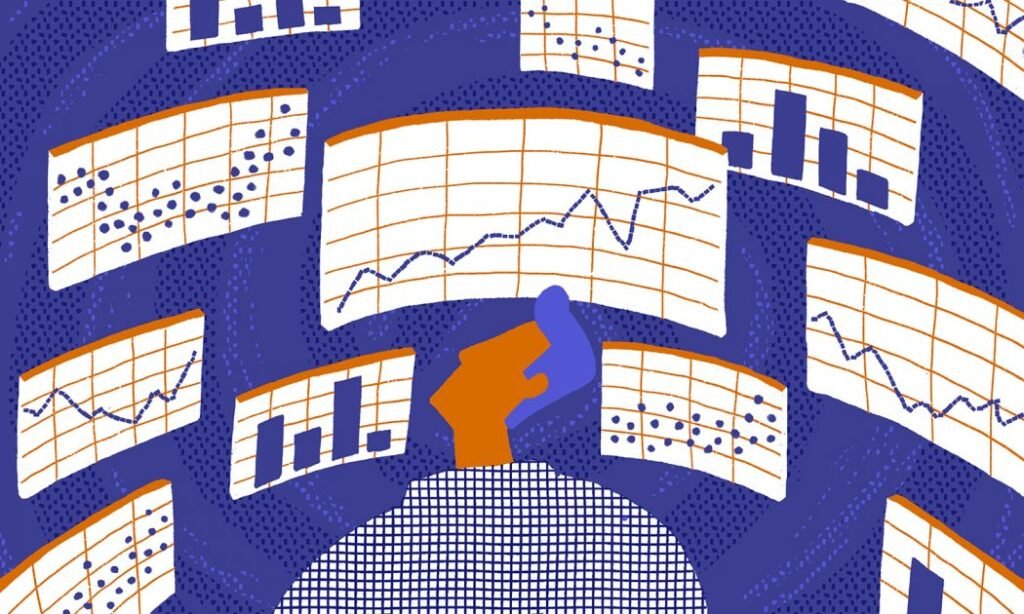This is no longer the case. Today, AI tools and workbenches allow you to click through some pretty advanced modeling techniques, with no coding or programming language knowledge required. This certainly does not mean that everyone can be a data scientist. But business professionals today can have AI at their fingertips to make data-driven projections. Sometimes, it’s as simple as clicking a button that says “prediction.”
To put this in perspective, let’s look at the four phases of data analytics technology for the business—three that got us to this point and one for what’s next.
Phase 1—Simple data management
For years, businesses have organized information in spreadsheets—mostly Excel—to perform analyses, such as summary statistics by group. Of course, to get value from the tool, the user had to understand the output. Otherwise, the exercise was meaningless—and potentially dangerous when we made decisions based on something not fully known or understood.
For example, in the spreadsheet days, a data analyst might have compared the buying behaviors of customers across different groups or segments. Suppose the analysis showed a higher average purchase among Division 1 than Division 2, leading to the conclusion that Division 1’s customers were more important to the business. A slightly deeper analysis of volatility may reveal that segment 2 customers were actually more consistent buyers. That is, a better understanding of what the tool could produce resulted in more effective use of the tool.
While the spreadsheet was a great start for the analytical needs of everyday business professionals, it could be a blunt tool without the necessary nuances for deeper insights.
Phase Two—Powerful, but inaccessible, tools
The next phase brought advanced AI technology for data analysis into the mainstream of the business world. But until a few years ago, the most powerful AI analysis was limited only to developers and programmers building models with code. If one wanted to compare 10 different models to see which was the most effective at predicting an outcome, it would be necessary to write code for 10 different models.
Phase 3—Powerful, accessible AI workbenches
Today’s new consumer-facing technology tools combine powerful algorithms with great user interfaces. Unlike Phase 2 tools, AI workbenches no longer require coding knowledge to build multiple AI models. Additionally, the best AI workbenches easily run multiple models simultaneously and determine the best model for the data.
What remains unchanged from the early days of simple data management, however, is the importance of understanding the outcome. When an algorithm produces a result, there are right and wrong, simple and nuanced, ways to use that result.
Returning to the example of customer segments, if an AI model indicates that a particular customer segment is likely to increase in value, humans must decide what to do about it. Should they commit more to these clients to ensure a good outcome or maintain the status quo because these clients are likely to lead to a good outcome on their own? In other words, it takes human expertise, and AI provides valuable inputs to supplement that expertise.
I recently saw this in action as I watched a business team make decisions about how to do this develop the sales team talent and resources next year. Without any formal training in data science, the team had created an AI-generated graphic that highly accurately predicted the buying behaviors of AI-defined customer segments.
Five years ago, this same team would have needed an expensive external data analytics resource to tackle this task. But more likely they would never have thought of building a prediction model from scratch. Today, however, this analysis is part of how they do business.
Recent Harvard Business Review The article said that the digital transformation brought about by the Covid pandemic has shown the importance of data analytics and artificial intelligence for business leaders. He cited his recent research The AI Magazine found that 72 percent of business leaders believe artificial intelligence will play a positive role in the future.
The question, then, is what the future of consumer-facing AI tools will look like.
Phase 4—The next frontier of Analytics technology
As we look ahead, a new frontier of productivity is emerging as analytics are integrated into everyday business processes and workflows. Currently, common “desktop AI” tools can show how various factors relate to outcomes. Therefore, it would not be computationally heavy to take the next step and use these relationships to prescribe some optimal combination of inputs. To be clear, I don’t just want to see what’s behind the models (ie, “glass AI”). I want the model to show me the optimal combination of inputs for all possible outcomes and relate that to the benefits of being right and the cost of being wrong for my particular decision.
My wish list for the future will also include improvements to data integration. Increasingly, artificial intelligence is improved with relevant external data. This seems to indicate a future market boom around AI’s ability to identify valuable external data sets and easily integrate and configure them.
Beyond that, it’s only natural to imagine a series of truly customizable decision-making tools, putting the power of AI tools in the hands of business professionals. This will not turn them into data scientists, nor will it diminish the value of professional data scientists. However, the more seamless integration of AI into everyday business will increase its value and usability, provided the results are well understood.
*
This article originally appeared on Forbes.
